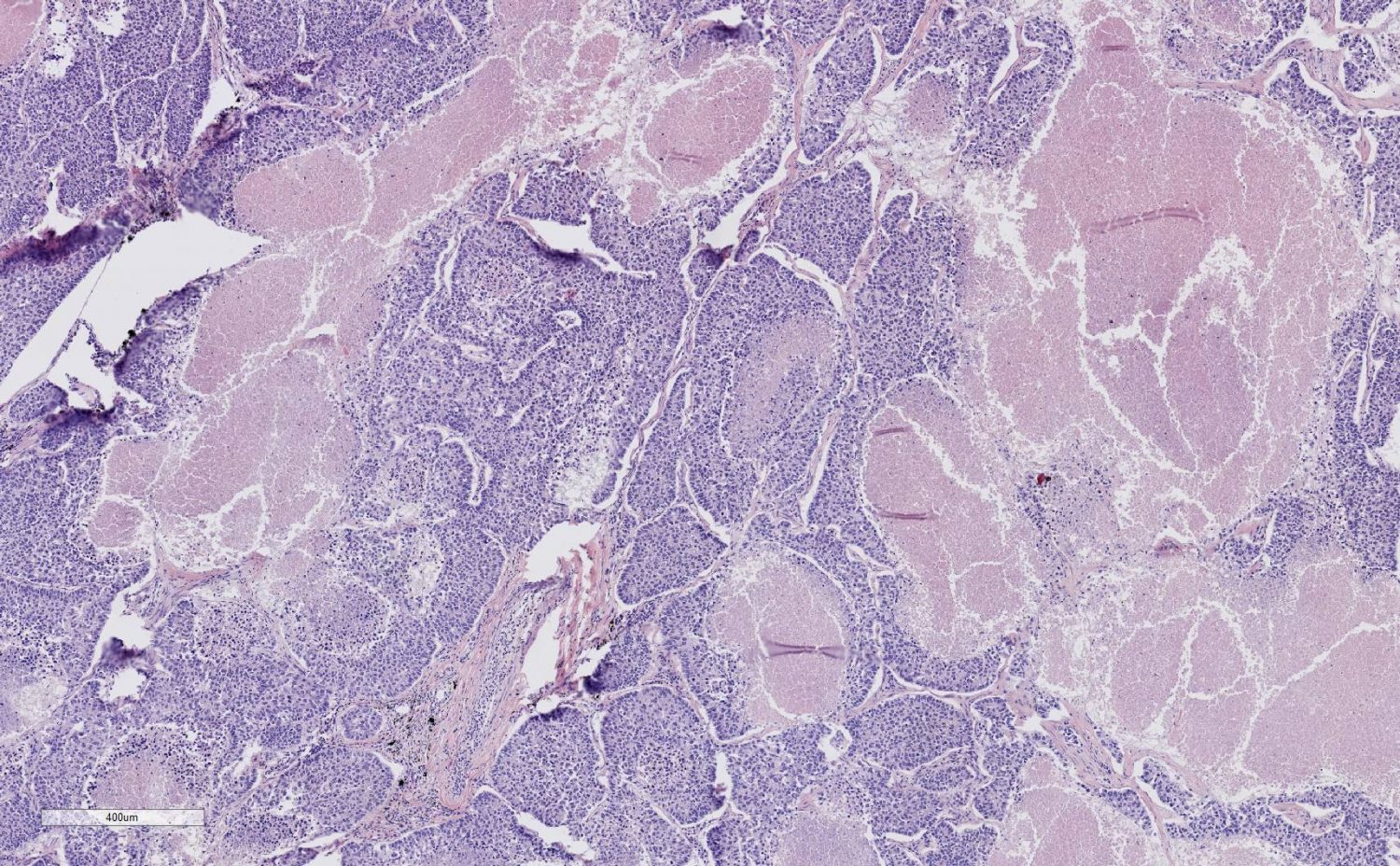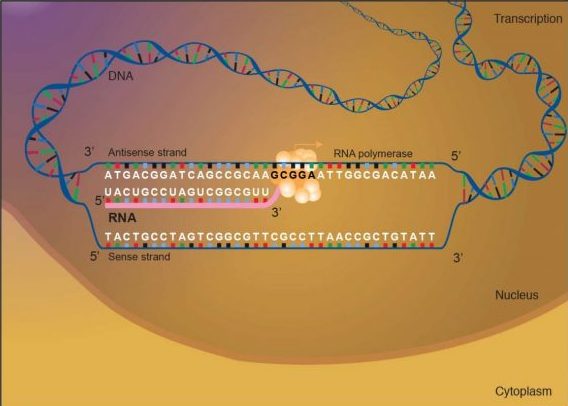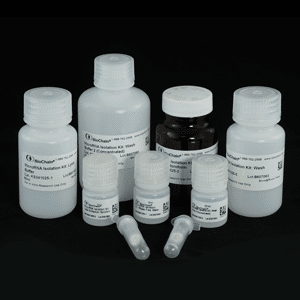
An Introduction to RNA Extraction
Ribonucleic acid (RNA) is vital to life, being present everywhere – from carrying genetic information to the production of deoxyribonucleic acid (DNA). However, RNA is one of the most fragile and delicate samples to extract and must be handled with care due to the presence of ribonuclease enzumes (RNases) which quickly degrade the RNA upon contact. RNases are present nearly everywhere, such as in water, skin, and even sometimes the researcher’s breath. Therefore, it is of absolute importance to use special care during RNA extraction and isolation. Detailed below is a useful method of RNA extraction from frozen tissues.
Figure 1 Right: Ribonucleic Acid (RNA) in the Nucleus Source

Method of Extraction
This method, utilizing a commercial kit, is particularly useful if the same tissue sample is being used for RNA, DNA, and protein extraction simultaneously. The kit provides chemical reagents, including usage and storage details. It is vital that the tissue be kept frozen, or there is a risk of RNA degradation.
Materials used:
- Solution 1 (kit), Solution 2 (kit), Solution 3 (kit)
- DEPC treated water/.1 mM EDTA (kit)
- Phenol B (kit)
- chloroform
- isopropanol
- ethanol
Steps for Extracting RNA
Prepare Frozen Tissue
- First, weigh the tissue and use a hammer to crush it.
- Add to a centrifuge tube and store on ice.
- Add 10 milliliters of Solution 1 and 1 milliliter of Solution 2 per gram.
- Mix the solutions well.
- Add 10 milliliters of Phenol B per gram, and shake for 1 minute.
- Next, add 4 milliliters of chloroform per gram, and shake once more.
- Let the solution rest on ice for 15 minutes.

Frozen Tissue Panel
Centrifuge & Transfer
- Centrifuge the solution at 18,000 g for 15 minutes at 4° C. This should separate the solution into two phases; the upper aqueous phase (referred to here as the supernatant) and the lower organic phase.
- Transfer the supernatant to a new tube, as this is from where the RNA will be extracted. The organic phase may be kept for protein extraction.

Frozen Tissue Section
Create a Mixture
- Add 1 volume of isopropanol to the supernatant and mix.
- Store the solution at -20° C for about an hour.
- Once more, centrifuge the tube at 18,000 g for 15 minutes at 4° C. This should form a solid pellet and leave liquid supernatant at the top. The supernatant should be discarded.
- Dissolve the pellet in DEPC treated water with .1 mM EDTA and adjust the concentration to 0.6 micrograms per microliter.
- Add ½ volume of Solution 3 into the tube, and mix.
- Store this mixture overnight at -20° C.
Obtain the RNA
- After the solution has incubated, centrifuge again at 18,000 g for 15 minutes at 4° C. This will cause a separation of supernatant, from which DNA may be extracted, and a pellet of RNA.
- Wash the pellet with 10 milliliters of 70% ethanol per gram of tissue.
- Centrifuge one last time at 18,000 g for 15 minutes at 4° C, and discard the supernatant.
- Dissolve the RNA in DEPC treated water with .1 mM EDTA.
- Your RNA is ready to be used! If storing, keep the sample at -70° C.
Tips On Extracting RNA from Frozen Tissue
Being Efficient
Consider using an RNA extraction kit to streamline the process.
Recovering the Most RNA
- In order to recover as much RNA as possible, consider starting with fresh tissue that has not been stored for any time at all. Since this is usually impossible, immediately snap freeze tissue, by completely immersing it in liquid nitrogen as quickly after collection as is possible.
- Keep all tissues before extraction frozen, and ensure the RNA is immediately frozen again after extraction, or suspended in a solution such as described above.
Maintaining Cool Temperatures
- If using dry ice or liquid nitrogen as the freezing agent, grind tissue with a mortar and pestle before homogenizing with a tissue homogenizer; this keeps RNases inactive.
- If using snap frozen tissue, all homogenization should be done with a mortar and pestle that has been cooled with liquid nitrogen.
Preventing Contamination
- To prevent contamination, always follow good lab hygiene, and include a face mask if working close to the RNA. If needed, use an autoclave to sterilize equipment before use. Some labs will dedicate a lab bench to be used exclusively for laboratory operations involving RNA. Some will maintain a dedicated set of extraction equipment that is used exclusively for RNA, and never used for DNA extractions.
- ANY water used anywhere for mixing, cleaning, rinsing, etc should be RNAse free. Water should be treated with a DEPC solution prior to autoclaving it. RNAse free water can also be purchased.
- Ensure all materials and equipment are free of RNAse. Continue to clean and rinse every piece of equipment before and during the extraction process. Some prefer to use RNAseZap, while others recommend using a Neutracon solution and rinsing with 1% SDS that uses RNAse free water, then rinsing in ethanol.
BioChain: Ease and Convenience
Author
BioChain Institute Inc.


